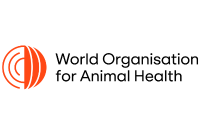World Organisation for Animal Health
Porcine reproductive and respiratory syndrome (PRRS), also called blue ear disease, is a widespread disease affecting domestic pigs. The symptoms include reproductive failure, pneumonia and increased susceptibility to secondary bacterial infection. It is caused by a virus classified as a member of the genus Arterivirus. PRRS is a disease listed in the World Organisation for Animal Health (WOAH, founded as OIE) Terrestrial Animal Health Code and Members are committed to report outbreaks to the organisation, according to the Terrestrial Animal Health Code.
PRRS is now found in most areas of the world where pigs are raised. In Asia, it was identified in P.R. China in 1995 and is present in Japan, Vietnam, the Philippines, Malaysia, and Korea (Rep. of), among other countries. Australia, New Zealand, and India are currently free of this disease.
Activities co-organized with the WOAH reference laboratory for PRRS in our region
In Asia and the Pacific region, the WOAH Reference Laboratory for PRRS is located in China Animal Disease Control Center (CADC), P.R. China, which can provide scientific and technical training for personnel from Members and coordinate scientific and technical studies in collaboration with other laboratories or organisations. With support from a fund of P.R. China, the WOAH Regional Representation for Asia and the Pacific (RRAP) and CADC have been co-organizing annual training courses/technical workshops for regional members since 2014, which has greatly strengthened disease diagnosis/surveillance capacity and implementation of control activities for our region.
Other relevant activities
